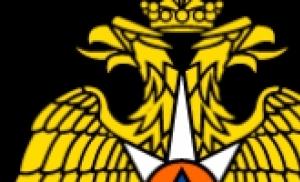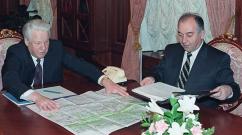Variable cost economics. Microeconomics
Fixed costs include costs that do not depend on the volume of output, variables - those whose size is determined by the volume of output, and usually proportional to it.
The above costs can be divided into fixed and variable as follows.
Permanent:
1. Depreciation of equipment, the cost of its current and major repairs - fixed costs that do not depend on how many products the company produces, since equipment wear occurs in any case;
2. General workshop and general factory expenses are fixed, since they do not depend on whether the enterprise produces products or not (in any case, it will be necessary to allocate funds for the payment of rental payments, wages of employees and specialists, and so on).
Note: despite the fact that the rate of production costs is given per unit of output, in terms of economic content, this item of expenditure is constant;
Variables:
1. The cost of raw materials, basic materials, purchased semi-finished products and components, as well as auxiliary materials are variable, since the more products are produced by the enterprise, the more raw materials and materials are consumed for it;
2. Fuel and energy costs are variable, as they are determined by whether or not the equipment that produces the product is working;
3. The wages of workers and other items calculated on its basis (additional wages of production workers, deductions) are variable, since piecework workers are paid for the output;
4. The cost of spare parts for equipment and high-wear tools is considered variable, since with a larger output, the wear of parts directly acting on production parts occurs faster;
5. Payment for communication, postal and transport services for commercial purposes to a certain extent depends on the volume of products produced (with a larger volume, more consumers are needed, these cost items increase accordingly), therefore they are classified as variables.
Table 7.3 - Fixed, variable costs
| Cost item | Amount, rub. |
| fixed costs | |
| Depreciation | 24 794,00 |
| Maintenance | 28 217,50 |
| Overhaul | 8 465,25 |
| Workshop overhead costs | 2 399 171,54 |
| Factory overhead | 11 696 521,61 |
| Total | 14 157 169,90 |
| variable costs | |
| Raw materials, basic materials, purchased semi-finished products and components | 427 501 434,40 |
| Auxiliary materials | 27 929 380,40 |
| Fuel for technological purposes | 771 676,00 |
| Energy for technological purposes | 1 014 466,30 |
| Basic salary of production workers | 9 197 206,47 |
| Additional salary for production workers | 6 285 415,64 |
| Payroll and payroll deductions | 6 167 441,84 |
| Cost of spare parts for equipment | 11 531 568,00 |
| Tool costs | 934 992,00 |
| Selling expenses | 419 750,00 |
| Total | 491 753 331,10 |
Fixed costs are:
14 157 169,90 * 100% / 505 910 500,95 = 2,8%
Variable costs are:
491 753 331,10 * 100% / 505 910 500,95 = 97,2%
Financial planning is the search for the most profitable ways for the development and further functioning of the organization. As part of planning, the efficiency of investment, production and financial activities is also predicted. Therefore, for any enterprise, drawing up a plan of expenses and incomes allows not only to obtain data on the cost of production and profitability, but also to find out comprehensive information about the development of the organization in a certain direction.
Qualitative analysis requires an objective assessment of costs based on changing production volumes. As a rule, the main types of expenses include the costs of an enterprise of a variable and fixed type. So what are fixed and variable costs, what is included there and what is their relationship?
Variable costs are expenses that change based on an increase or decrease in sales activity and production volumes. In addition to direct costs, variables may include financial costs for the acquisition of tools, necessary materials and raw materials. When converted to a commodity unit, variable costs remain stable, regardless of fluctuations in production volumes.
What are the variable costs of production?
Fixed cost type: what is it?
Fixed costs in business are those costs that a firm incurs even if it does not sell anything. In addition, it is worth remembering that when converted to a commodity unit, this type of cost changes in proportion to the increase or decrease in production volumes.
Fixed costs include:

Interdependence of production costs
The relationship of variable costs with fixed costs is an important indicator. Their interdependence in relation to each other is the break-even point of the organization, which consists in, which the enterprise needs to do in order to be considered profitable and have costs equal to zero, that is, absolutely covered by the company's income.
The break-even point is determined by a simple algorithm:
Break-even point = fixed costs / (the cost of one unit of goods - variable costs per unit of goods).
As a result, it is easy to see that it is required to manufacture products of such a production volume and at such a cost that it can cover fixed costs that remain unchanged.
Conditional classification of production costs
In fact, it is quite difficult to draw a clear line between variable and fixed costs with some certainty. If production costs change regularly during the operation of the enterprise, it is recommended to consider them as semi-fixed and semi-variable costs. Do not forget that almost every type of cost has elements of certain costs. For example, when paying for the Internet and telephony, you can find out the constant share of the required costs (monthly service package) and the variable share (payment depending on the duration of long-distance calls and minutes spent in mobile communications).
Examples of basic expenses of a conditionally variable type:

- Variable type costs in the form of components, necessary materials or raw materials in the manufacture of finished products are defined as conditionally variable costs. The fluctuation of these costs is possible due to the increase or decrease in prices, changes in the technological process or the reorganization of the production itself.
- Variable costs relating to piecework direct wages. Such costs change in quantity and due to fluctuations in wages with growth or daily norms, as well as when the incentive share of payments is updated.
- Variable costs, including a percentage of sales managers. These costs are always in flux, as the amount of payments depends on the activity of sales.
Examples of basic expenses of a conditionally fixed type:
- Fixed-type expenses for payments for renting space vary throughout the life of the organization. Costs can both rise and fall, depending on the increase or decrease in the rental value.
- The salary of the accounting department is considered a fixed type of cost. Over time, the amount of labor costs may increase (which is interconnected with quantitative changes in the state and the expansion of production), or may decrease (when accounting is transferred to).
- Fixed costs can change when they are moved to variables. For example, when an organization manufactures not only goods for sale, but also a certain proportion of component parts.
- The amounts of tax deductions also vary. is able to grow due to the increase in the cost of space or due to changes in tax rates. The amount of other tax deductions that are considered fixed costs may also change. For example, the transfer of accounting to outsourcing does not imply the payment of a salary, respectively, and UST will not be required to be charged.
The above types of conditionally fixed and conditionally variable costs clearly demonstrate why these costs are considered conditional. During his work, the owner of the enterprise tries to influence the change in profits. For example, to reduce costs and increase profits, in the same period, the market and other external conditions also have a certain impact on the activities of the enterprise.
As a result, the costs regularly change under the influence of certain factors, taking the form of costs of a conditionally constant or conditionally variable type.
It is desirable to maintain a balance between costs from the very beginning of the enterprise. Remember, so that you do not need to apply for a loan or, you need to rationally approach the analysis of fixed and variable costs. Since it is he who allows you to build the most effective financial plan for the company.
Write your question in the form below
The implementation of any activity of companies is impossible without investing costs in the process of making a profit.
However, there are different types of costs. Some operations during the operation of the enterprise require constant investments.
But there are also costs that are not fixed costs, i.e. are related to variables. How do they affect the production and sale of finished products?
The concept of fixed and variable costs and their differences
The main purpose of the enterprise is the manufacture and sale of manufactured products for profit.
To produce products or provide services, you must first purchase materials, tools, machines, hire people, etc. This requires the investment of various amounts of money, which are called "costs" in economics.
 Since monetary investments in production processes are of various types, they are classified depending on the purpose of using the costs.
Since monetary investments in production processes are of various types, they are classified depending on the purpose of using the costs.
In economics costs are shared by these properties:
- Explicit - this is a type of direct cash costs for making payments, commission payments to trading companies, payment for banking services, transportation costs, etc.;
- Implicit, which include the cost of using the resources of the owners of the organization, not provided for by contractual obligations for explicit payment.
- Permanent - this is an investment in order to ensure stable costs in the production process.
- Variables are special costs that can be easily adjusted without affecting operations, depending on changes in output.
- Irrevocable - a special option for spending movable assets invested in production without return. These types of expenses are at the beginning of the release of new products or the reorientation of the enterprise. Once spent, the funds can no longer be used to invest in other business processes.
- Average costs are estimated costs that determine the amount of capital investment per unit of output. Based on this value, the unit price of the product is formed.
- Marginal - this is the maximum amount of costs that cannot be increased due to the inefficiency of further investments in production.
- Returns - the cost of delivering products to the buyer.
From this list of costs, fixed and variable types are important. Let's take a closer look at what they consist of.
Kinds
What should be attributed to fixed and variable costs? There are some principles on which they differ from each other.
 In economics characterize them as follows:
In economics characterize them as follows:
- fixed costs include the costs that must be invested in the production of products within one production cycle. For each enterprise, they are individual, therefore, they are taken into account by the organization independently on the basis of an analysis of production processes. It should be noted that these costs will be typical and the same in each of the cycles during the manufacture of goods from the beginning to the sale of products.
- variable costs that can change in each production cycle and are almost never repeated.
Fixed and variable costs add up to total costs, summed up after the end of one production cycle.
If you have not yet registered an organization, then the easiest this can be done using online services that will help you generate all the necessary documents for free: If you already have an organization and you are thinking about how to facilitate and automate accounting and reporting, then the following online services come to the rescue, which will completely replace an accountant at your plant and save a lot of money and time. All reporting is generated automatically, signed with an electronic signature and sent automatically online. It is ideal for an individual entrepreneur or LLC on the simplified tax system, UTII, PSN, TS, OSNO.
Everything happens in a few clicks, without queues and stress. Try it and you will be surprised how easy it got!
What applies to them
The main characteristic of fixed costs is that they do not actually change over a period of time.
In this case, for an enterprise that decides to increase or decrease the volume of output, such costs will remain unchanged.
Among them can be attributed such costs:
- communal payments;
- building maintenance costs;
- rent;
- employee earnings, etc.
In this scenario, it must always be understood that the constant amount of total costs invested in a certain period of time for the release of products in one cycle will only be for the entire number of manufactured products. When such costs are calculated piece by piece, their value will decrease in direct proportion to the growth in production volumes. For all types of industries, this pattern is an established fact. 
Variable costs depend on changes in the quantity or volume of products produced.
To them refer such expenses:
- energy costs;
- raw materials;
- piecework wages.
These cash investments are directly related to production volumes, and therefore vary depending on the planned parameters of output.
Examples
In each production cycle there are cost amounts that do not change under any circumstances. But there are also costs that depend on production factors. Depending on such characteristics, economic costs for a certain, short period of time are called fixed or variable.
For long-term planning, such characteristics are not relevant, because Sooner or later, all costs tend to change.
Fixed costs - ϶ᴛᴏ costs that do not depend in the short run on how much the company produces. It is worth noting that they represent the costs of its constant factors of production, independent of the quantity of goods produced.
Depending on the type of production into fixed costs The following expenses are included:

Any costs that are not related to the release of products and are the same in the short period of the production cycle can be included in fixed costs. According to this definition, it can be stated that variable costs are such costs that are invested directly in output. Their value always depends on the volume of products or services produced.
Direct investment of assets depends on the planned amount of production.
Based on this characteristic, to variable costs include the following costs:
- raw material reserves;
- payment of remuneration for the work of workers engaged in the manufacture of products;
- delivery of raw materials and products;
- energy resources;
- tools and materials;
- other direct costs of producing products or providing services.

The graphical representation of variable costs displays a wavy line that smoothly rushes up. At the same time, with an increase in production volumes, it first rises in proportion to the increase in the number of manufactured products, until it reaches point "A".
Then there is cost savings in mass production, in connection with which the line no longer rushes up at a slower speed (section "A-B"). After the violation of the optimal expenditure of funds in variable costs after the point "B", the line again takes a more vertical position.
The growth of variable costs can be influenced by the irrational use of funds for transportation needs or excessive accumulation of raw materials, volumes of finished products during a decrease in consumer demand.
Calculation procedure
Let's give an example of calculating fixed and variable costs. Production is engaged in the manufacture of shoes. The annual output is 2000 pairs of boots.
 The enterprise has the following types of expenses per calendar year:
The enterprise has the following types of expenses per calendar year:
- Payment for renting the premises in the amount of 25,000 rubles.
- Payment of interest 11,000 rubles. for a loan.
Production costs goods:
- for wages when issuing 1 pair of 20 rubles.
- for raw materials and materials 12 rubles.
It is necessary to determine the size of the total, fixed and variable costs, as well as how much money is spent on the manufacture of 1 pair of shoes.
As you can see from the example, only rent and interest on a loan can be added to fixed or fixed costs.
Due to the fact that fixed costs do not change their value with a change in production volumes, then they will amount to the following amount:
25000+11000=36000 rubles.
The cost of making 1 pair of shoes is a variable cost. For 1 pair of shoes total costs amount to the following:
20+12= 32 rubles.
For the year with the release of 2000 pairs variable costs in total are:
32x2000=64000 rubles.
General costs calculated as the sum of fixed and variable costs:
36000+64000=100000 rubles.
Let's define average total cost, which the company spends on tailoring one pair of boots:
100000/2000=50 rubles.
Cost analysis and planning
 Each enterprise must calculate, analyze and plan the costs of production activities.
Each enterprise must calculate, analyze and plan the costs of production activities.
Analyzing the amount of expenses, options for saving funds invested in production with a view to their rational use are considered. This allows the company to reduce its output and, accordingly, set a cheaper price for finished products. Such actions, in turn, allow the company to successfully compete in the market and ensure continuous growth.
Any enterprise should strive to save production costs and optimize all processes. The success of the development of the enterprise depends on this. Due to the reduction of costs, the company significantly increases, which makes it possible to successfully invest in the development of production.
Costs planned taking into account the calculations of previous periods. Depending on the volume of output, they plan to increase or decrease the variable costs of manufacturing products.
Display in the balance sheet
In the financial statements, all information about the costs of the enterprise is entered in (form No. 2).
Preliminary calculations during the preparation of indicators for entering in can be divided into direct and indirect costs. If these values are shown separately, then we can assume such reasoning that indirect costs will be indicators of fixed costs, and direct costs, respectively, are variables.
It is worth considering that there is no data on costs in the balance sheet, since it reflects only assets and liabilities, and not expenses and incomes.
For information on what fixed and variable costs are and what applies to them, see the following video material:
Back to
Costs are usually divided into fixed and variable costs. Fixed costs are those costs that do not depend on the volume of production and sales, they are unchanged, and do not constitute the direct cost of products, goods, services. Variable costs are costs that make up the direct cost of production, and their size directly depends on the volume of production and sales of products, goods or services. Fixed and variable costs examples are very diverse, they depend on the types and areas of activity. Today we will try to present fixed and variable costs in more detail in examples.
Fixed costs include the following types:
Rent. The most striking example of a fixed cost that occurs in any type of entrepreneurial activity is rent payments. An entrepreneur, renting an office, workshop, warehouse, is forced to pay regular rental payments, regardless of how much he earned, sold goods or provided services. Even if he has not received a single ruble of income, he will still have to pay the cost of rent, otherwise the contract with him will be terminated and he will lose the leased area.
wages of administrative staff, management, accounting, wages of support staff (system administrator, secretary, repair service, cleaning lady, etc.). The accrual and payment of such wages also does not depend in any way on sales volumes. This also includes the salary of sales managers, which is accrued and paid regardless of the performance of the sales manager.
The percentage part or bonus will be attributed to variable costs, since it directly depends on the volume, sales results. Examples of fixed costs include the salary of the main workers, which is paid regardless of the volume of products produced, or payments for forced downtime.
depreciation deductions. Accumulated depreciation amounts are also a classic example of fixed costs.
payment for services related to the general management of the enterprise. This includes utility costs: payment for electricity, water, communication services and the Internet. Services of security organizations, banking services (settlement and cash services) are also examples of fixed costs. Advertising agency services.
bank interest, interest on loans, discounts on promissory notes.
tax payments, the taxable base of which is static objects of taxation: land tax, corporate property tax, unified social tax paid on wages accrued on salaries, UTII - a very good example of fixed costs, various payments and fees for trade permits, environmental fees, transport tax.
Examples of variable costs associated with the volume of production, sales of goods and services are not difficult to imagine, they include:
Piecework wages for workers, the amount of which depends on the amount of goods produced or services rendered.
the cost of raw materials, materials and components used to manufacture products, the cost of purchased goods for subsequent resale.
the amount of interest paid to sales managers from the results of sales of goods, the amount of bonuses accrued to personnel based on the results of the enterprise.
the amount of taxes, the taxable base of which is the volume of production and sales of products, goods: excises, VAT, tax on the simplified tax system, UST, paid from accrued premiums, interest on sales results.
the cost of services of third-party organizations paid depending on the volume of sales: services of transport companies for the transportation of products, services of intermediary organizations in the form of agency or commission fees, sales outsourcing services,
the cost of electricity, fuel, in manufacturing enterprises. These costs also depend on the volume of production or the provision of services, while the cost of electricity used in an office or administrative building, as well as the cost of fuel for cars used for administrative purposes, are fixed costs.
As we have already said, knowledge and understanding of the essence of fixed and variable costs is very important for the competent management of a business, its profitability. Due to the fact that fixed costs do not depend on the volume of production and sale of goods, they are a certain burden for the entrepreneur. After all, the higher the fixed costs, the higher the break-even point, and this, in turn, increases the risks of the entrepreneur, since in order to cover the amount of large fixed costs, the entrepreneur must have a large volume of sales of products, goods or services. However, in conditions of fierce competition, it is very difficult to guarantee the constancy of the occupied market segment. This is achieved by increasing the cost of advertising and promotion, which also refers to fixed costs. It turns out a vicious circle. By increasing the cost of advertising and promotion, we thereby increase fixed costs, at the same time we stimulate sales. The main thing here is that the efforts of the entrepreneur in the field of advertising should be effective, otherwise, the entrepreneur will receive a loss.
This is especially important for small businesses, as the margin of safety for a small business entrepreneur is low, he has limited access to many financial instruments (loans, loans, third-party investors), especially for a budding entrepreneur who is just trying to grow his business. Therefore, for small businesses, you should try to use low-budget ways to promote your business, such as guerrilla marketing, non-standard advertising. It is necessary to try to reduce the level of fixed costs, especially at the initial stage of development.
![]()













